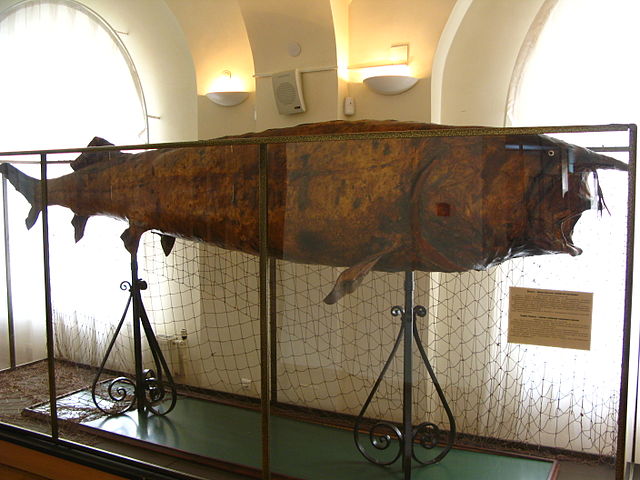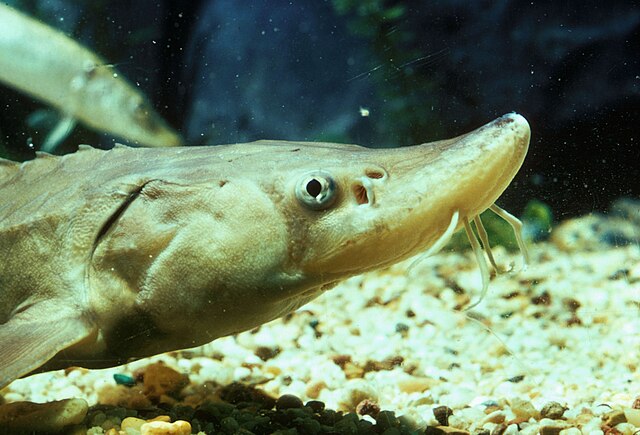The beluga, also known as the beluga sturgeon or great sturgeon, is a species of anadromous fish in the sturgeon family (Acipenseridae) of the order Acipenseriformes. It is found primarily in the Caspian and Black Sea basins, and formerly in the Adriatic Sea. Based on maximum size, it is the third-most-massive living species of bony fish. Heavily fished for the female's valuable roe, known as beluga caviar, wild populations have been greatly reduced by overfishing and poaching, leading IUCN to classify the species as critically endangered.
Beluga (sturgeon)
Comparison between an adult (above) and a juvenile (below) Huso huso
A 1000-kg, 4.17-m-long beluga fish from the Volga River (National Museum of Tatarstan, Kazan, Russia)
Fingerling of Huso huso eating a small fish in an aquarium
Sturgeon is the common name for the 28 species of fish belonging to the family Acipenseridae. The earliest sturgeon fossils date to the Late Cretaceous, and are descended from other, earlier acipenseriform fish, which date back to the Early Jurassic period, some 174 to 201 million years ago. They are one of two living families of the Acipenseriformes alongside paddlefish (Polyodontidae). The family is grouped into four genera: Acipenser, Huso, Scaphirhynchus, and Pseudoscaphirhynchus. Two species may be extinct in the wild, and one may be entirely extinct. Sturgeons are native to subtropical, temperate and sub-Arctic rivers, lakes and coastlines of Eurasia and North America. A Maastrichtian-age fossil found in Morocco shows that they also once lived in Africa.
Yanosteus longidorsalis, a member of the extinct acipenseriform family Peipiaosteidae from the Early Cretaceous (125–120 Mya) Yixian Formation in Liaoning, China
A young lake sturgeon (Acipenser fulvescens)
Great sturgeon or beluga (Huso huso) feeding on another fish
Sturgeon depicted on an ancient Greek Tetrachalkon (bronze coin) from Panticapaeum on the Crimean peninsula (Black Sea), 310–304 B.C.







